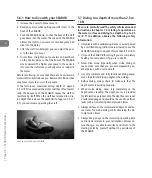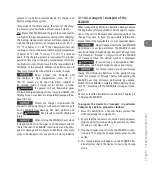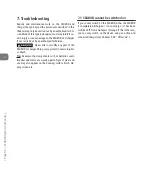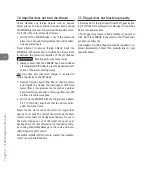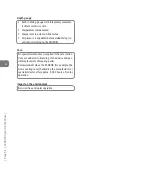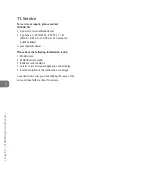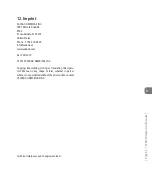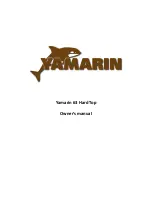
7
| P
age 59 | SEABOB Operator's Manual |
7.6 Moisture present in connection port
If moisture or wetness appears inside the sealed area of
the connection port, the seals are defective or the screw
cap was not put on or has been put on incorrectly. Charge
the SEABOB only if the connection port and connector
are completely clean and dry (see Chapter 5.2 "Charging
the SEABOB").
Check the sealing surfaces of the connection port and
screw cap thoroughly for damage or dirt. Replace the
screw cap if necessary.
If you detect defective sealing surfaces on the connection
port or any visible damage on the SEABOB, immediately
halt operation and contact the manufacturer or your spe-
cialist dealer without delay.
Never use a damaged connector or connection port, in
particular if the high-current contacts inside the sealed
area of the device are damaged. Doing so may cause the
contacts and cables to overheat during charging. Water
may leak into the batteries or may have already done so.
Danger of short circuit! There is the
danger of flammable gases being discharged causing
serious injury.
Never open the batteries. Danger of
short circuit! Beware of flammable gases that may be
discharged causing serious injury!
7.7 SEABOB cannot be charged
If the charge indicator does not appear on the display
and the SEABOB does not switch to charge mode de-
spite being connected to the charger, this could be due
to the fact that the connection port and / or connector
are not absolutely clean and dry. The connection port and
the connector must always be absolutely clean and dry
when charging.
Check the connection port and, if necessary, thor-
oughly clean and dry it (see Chapter 6.1 "Cleaning the
SEABOB"). Check the connector of the charger for mois-
ture, dirt and salt deposits, too. Clean and dry it using a
cotton bud, if necessary.
Ensure that there are no dried salt
deposits on the contacts of the connection port or con-
nector. Salt deposits inhibit electrical current flow when
charging and lead to the destruction of electrical con-
tacts due to overheating and could also result in a pos-
sible contact fire and / or cable fire.


